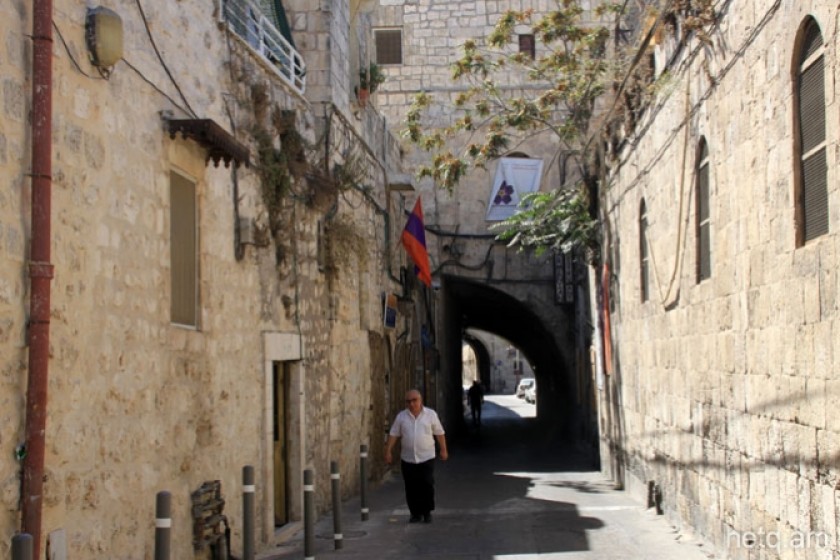
Like a Sandwich on Mt. Sion: The Ever Diminishing Armenian Community of Jerusalem
Before our trip, Jerusalem was boiling over. Armenians living in Israel advised us not to go to the Holy City.
In recent days, the local news was all about clashes and arrests. Others said this was a normal occurrence and that something happens daily in Jerusalem.
The entrance to the Old City, as like all entrances in Israel – a store, cultural or public institution – is guarded by soldiers. Anyone who looks suspicious is given a body check; this goes for bags as well.
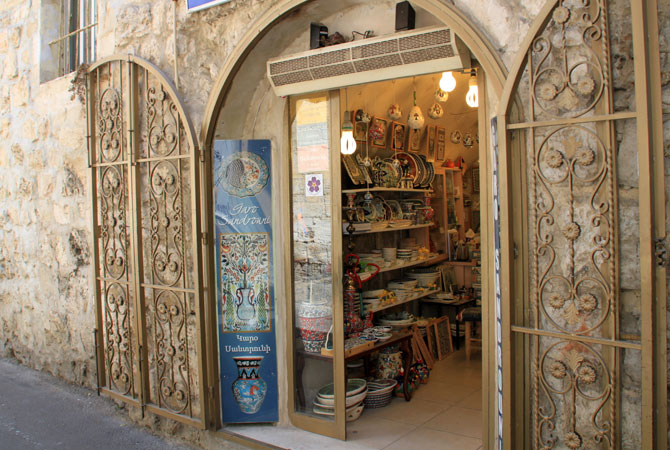 |
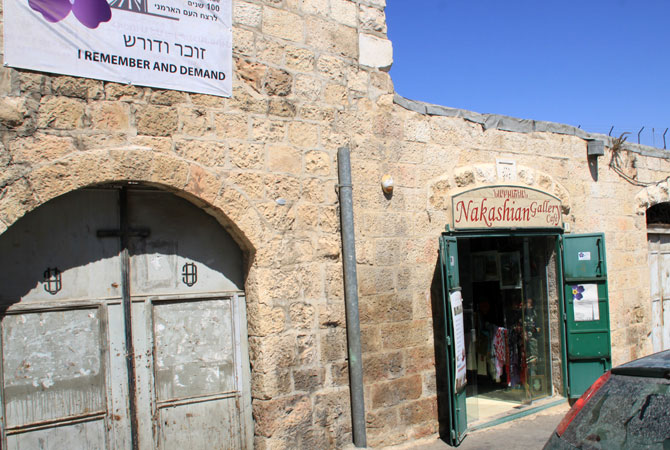 |
The street with Armenian lettering reminds me that this is the Armenian quarter. You pass by the ceramics, souvenir and cafes dotting the street and soon reach the Armenian Patriarchate. All Armenian churches in Israel and Armenian Apostolic religious communities in Jordan are under the jurisdiction of the patriarchate. The main preoccupation of the patriarchate, however, is to tend to the holiest sites in Jerusalem and Bethlehem.
The entrance is open but the gatekeeper doesn’t let us in. The Monastery of St. James, considered the seat of the patriarchate, is undergoing renovation.

Deacon Shahan Kyosian says that the monastery dates to the 4th century and hasn’t been repaired in a very long time. Repairs are now being made to the roof and rear wall and are scheduled for completion by December. The patriarchate expects to conduct holiday services in the monastery.
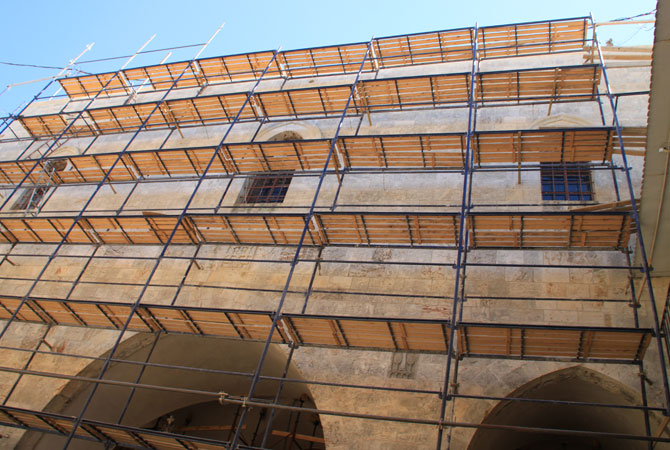
Very Rev. Father Samvel Aghoian, in charge of accounting matters at the patriarchate, joins the conversation. E says the patriarchate is funding the renovations, and that many other valuable items (paintings and ceramics) are also in need of preservation. He says this would necessitate a fund raising drive.
The Israeli government does not assist in any way and relations between Jerusalem and Etchmiadzin were a bit stormy due to recent disagreements but are now on the mend.
Extensive Holdings, Locked Buildings
Father Samvel shows us around to some of the buildings located within the patriarchate. The famous St. Tarkmanchatz School that once boasted an enrollment of 600 is now down to 15 students.
Armenians were the first to operate a printing press in Jerusalem. The building still stands and is supposed to be turned into a museum. Right now, it’s locked shut.
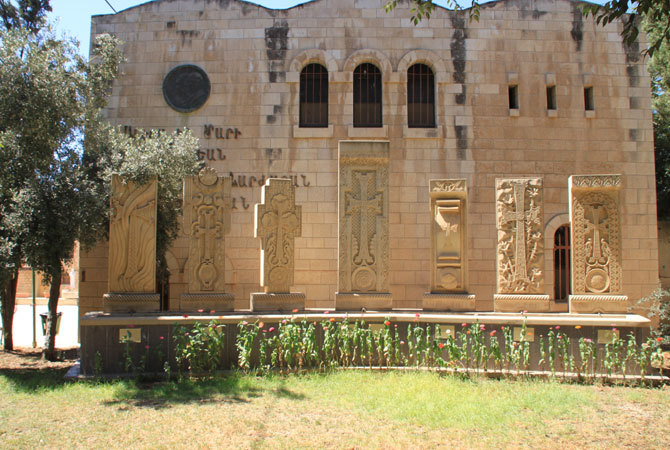
The Gulbenkian Library (above photo) is nearby. Over 100,000 volumes are kept here. The Palestinian government has promised to allocate funds to turn the old theological seminary building into a museum. Father Samvel says it’s how the Palestinians try to curry favor with the Armenians. So far, they haven’t fulfilled their promise.
The Monastery of St. James is built on Mt. Sion. To this day, Jews are amazed as to how Armenians have been able to maintain their position and holdings on the mountain till today.
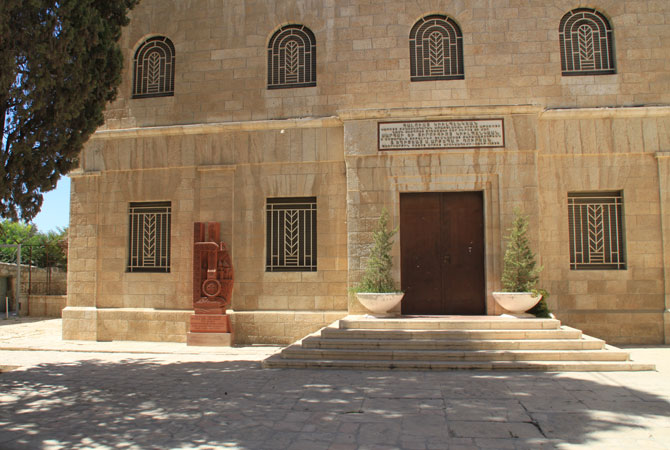
The Armenian holdings in the Old City, especially around the monastery and the part pictured above, once served as the border between Israel and Jordan. The Armenian holdings, once part of Jordan, are now part of Israel.
“One-sixth of the Old City is Armenian holdings, the Armenian portion. If you were to sell Armenia you couldn’t purchase this place. If Armenians are to remain, it will be here in Jerusalem,” says Father Samvel Aghoian.
The issue of the Armenian Patriarchate’s holdings is still up in the air. Those plots that the Jews have declared “green zones” (eminent domain) are scheduled for planting but will still revert to Armenian ownership.
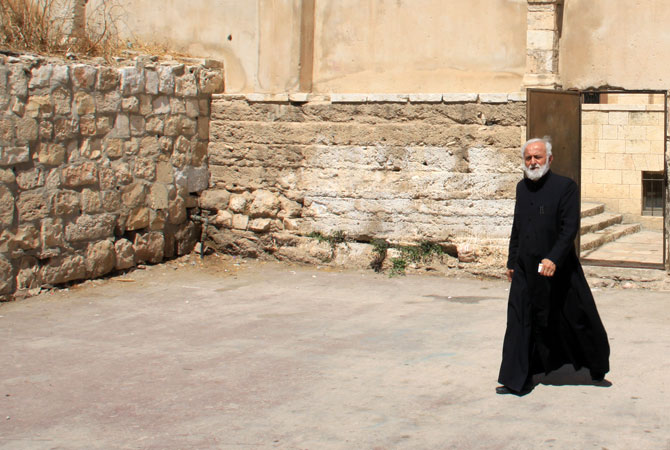
“But if you have land, that once was a holy site or has holy relics, they tell you that you can build a fence around it and put a guard on duty. They declared our Pilibos spring a green zone but they still haven’t started to use it. There is still no plan about what to so there,” said the clergyman.
At one time, Armenians had seventy monasteries in the Holy Land. Most lie in ruins today. About fifteen churches are left. Father Samvel says that some 1,000 Armenians reside in Jerusalem today; most are his age or a bit younger.
“The doors opened after the war. People received freedom and the young people left for foreign kinds to pursue their dreams. Their parents followed them and our numbers have diminished.”
“There will be an Armenian presence here if people wish to remain Armenian,” the clergyman says. “One must be strong and defend ones rights. We are like a sandwich between two Semitic nations. Both are desert people. One is primitive and the other developed. Our problem is that we are Christian,” argues Father Samvel.
He says that Christians comprise 10% of Jerusalem and are overlooked. The clergyman says it’s probably because they never speak out or protest.
“We are few in number. What can we do? We cannot be on the side or the Jew or the Arab. It doesn’t make sense to support one or the other. It’s dangerous and won’t result in anything. We know that the Jews don’t like us but they have promised, on an international level, to defend all the churches. But the people don’t like us and will spit on us if need be.”

Father Samvel was born in Syria and served as a clergyman in the U.S. for thirty years before relocating to Jerusalem. He says that if the Israeli government doesn’t grant him residency papers he will be forced to leave.
“They discriminate that way. They don’t want the non-Jewish communities to get bigger here. If this is the long-term mentality, I’m afraid that there might not be any Armenian churches left here. They won’t let any crosses remain.”
Nevertheless, Father Samvel is convinced that it’s not for nothing that Armenians live atop the holy mountain.
“We will stay here. We will not flee.”
 Videos
Videos Photos
Photos




Comments (1)
Write a comment